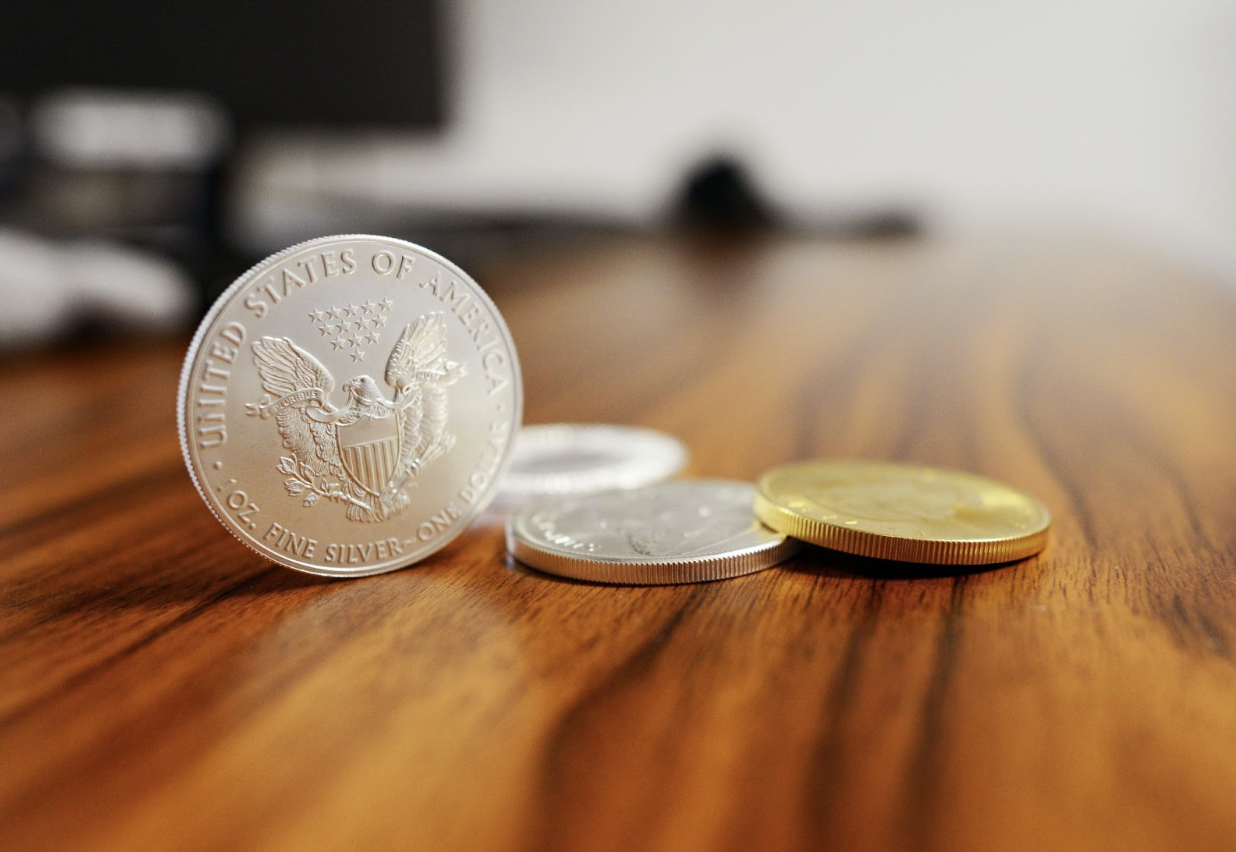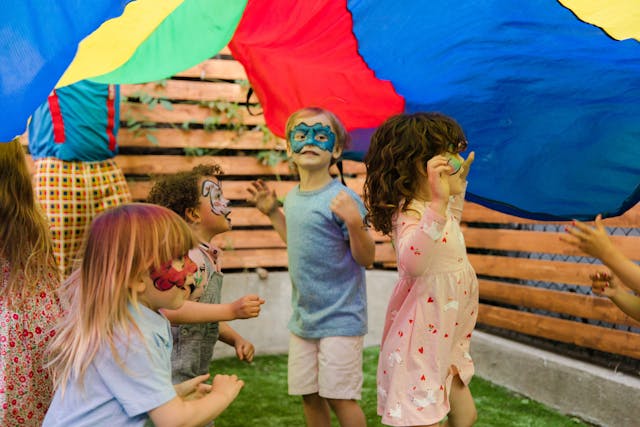Teach Kids Fairness through Coin Flips8 min read
Heads Or Tails? Often it decides the outcome of your favorite game. How? Well, that is an interesting question. In many games, one party has to make the first move, and a coin toss often decides that. The idea behind the coin toss is that there are two possible outcomes, and so each party has a 50-50 chance to win. This “evens” things up and often helps indecisive individuals make decisions better and faster.
Imagine you have multiple kids, and you are struggling to make them agree on a single point! Or, you have to take one of your kid’s sides! That’s pretty difficult, huh? But with flipping coins, things can be resolved easily and quickly.
So, sit back and review this article if you want a more in-depth discussion on why you should let your kids flip coins. So let’s begin!
Contents
What Is A Coin Flip?
Evident from the name, a coin flip is an act of tossing and flipping a coin and allowing it to land on a surface. The whole point of this act is to guess which side of the coin is facing upwards. There are various methods of coin tossing based on how it is allowed to land:
- Catching it with your hands
- Allowing it to land on the ground
- Catch it in your hands and invert it
Regardless of how it lands, one thing is to be made sure of, and that is the coin must be allowed to rotate several times while it is in the air.
Brief History of Coin Flipping
Historically, the act of coin flipping can be traced back to ancient Roman times or the 7th century before Christ. Then, it was known as Navia Aut Caput, where Navia means to ship and Caput means to ship, so this roughly translates to ships or heads. This is because, at that time, coins had a face of a ship as one of its sides and the head or face of an emperor as its other side.
Modern names of this act include Face Or Seal or Cara O Sello in Peru and Cross and Pile in Britain.
3 Reasons You Should Let Your Kids Flip Coins
There are a few reasons you should let your kids flip coins below that are discussed thoroughly.
To Make Decisions Quickly
Sometimes, when two options are equally viable, choosing one over the other often becomes impossible. This happens when the pros and cons of both options are equal and have the same value.
For instance, while getting your kid dressed up for a dinner party, he has two sets of clothes to choose from. This is where coin flips offer an excellent solution.
And that is because, in theory, the odds of receiving heads or tails are 50/50 or equal. So whichever option wins, wins out of luck.
To Resolve Disputes
When you are caught between a rock and a hard place or when an unstoppable force meets an immovable object, situations like those are ones where ordinary means of resolving disputes don’t work. In such cases, coin tosses are used as a last resort.
Take, for example, situations where your kids are arguing over who gets to pick the next movie or choose the next restaurant to eat at! Whose side are you supposed to take? Take a coin and flip it. Voila! That’s how easy it is.
It is Fun and Exciting and Educational
The probability of heads or tails is dead set even, theoretically. So it all becomes a matter of luck. So it can make your decision-making very interesting and fun, especially for children, and serve as a fun activity for them while teaching them science and mathematics.
For instance, you can teach your children about the concepts of math, statistics, and probabilities while making the learning experience fun. You can give them two dessert options and allow them to make decisions based on coin flips.
Again, you can give them incentives like “if you get heads, you get 10 minutes to break from homework; if you get tails, you get 5 minutes of a break from homework.” Again, this gets schoolwork done while making things interesting.
This is one of the best reasons you should let your kids flip coins.
Some Famous and Historical Coin Flips
Here are some coin flips that shaped the future:
Portland’s Name
Portland was incorporated in 1849. The two New Englanders who founded Portland, then known as The Clearing, competed to have the 640-acre area named after their own hometowns. Asa Lovejoy of Boston and Francis Pettygrove of Portland, Maine, two early settlers split the site’s land claim and decided the matter by flipping a coin.
In the parlor of Francis Ermatinger House, which is situated in Oregon City, Pettygrove came out on top in the two-out-of-three coin toss, and the rest is history. The copper one-cent coin, minted in 1835 and now known as the Portland Penny, is now on display there at the Oregon Historical Society Museum.
The First-Ever Instance of Flight by Humans
When Wilbur Wright defeated his brother Orville in a coin toss at their camp in Kill Devil Hills, N.c., in 1903, he earned the chance to go down in history. On December 14, Wilbur defeated his brother with the coin flip for the opportunity to try flying first. However, fate would have it that Wilbur would stall the flyer on his first try, sending it into the sand.
Orville initially launched the device at 10:30 on Dec. 17, 1903, three days after repairs. Wilbur, who managed to win the coin flip fairly and squarely, was recorded in a picture running next to the plane while very grounded.
The Fate of Ritchie Valen
A day before the music industry collapsed, the massive Winter Dance Party Tour featuring rock pioneers Buddy Holly, Ritchie Valens, and J.P. “The Big Bopper” Richardson stopped at the Surf Ballroom in Clear Lake, Iowa. After his tour bus experienced mechanical difficulties, Holly commissioned an aircraft for the tour’s next destination, Moorhead, Minnesota. Richardson, who had the flu, persuaded Waylon Jennings of the Holly band to give his position to make room on the plane for a third passenger.
Tommy Allsup, a guitar player in Holly’s band, lost out on the final seat after a coin flip. On February 3, 1959, this same airplane managed to crash into a cornfield due to a pair of piloting errors and unfavorable weather conditions. Don McLean would refer to this day as “The Day the Music Died.”
Ownership of Secretariat
The true story of Secretariat begins in 1969, 4 years even before the horse won the Triple Crown. For the first choice of two foals by renowned racehorse Bold Ruler, Penny Chenery of the Meadow Stable and the Ogden Phipps of Wheatley Stable used a coin flip. Phipps won and chose a filly by Bold Ruler as well as a horse by the name of Hasty Matelda.
That left Chenery in charge of the unborn colt that would bear the names Secretariat at the age of two, come out on top of the Triple Crown at the three-year-old stage, and have a heart that was almost four times the size of a typical horse. Only Wilt Chamberlain reaching the century mark surpasses Secretariat’s performance now at Belmont Stakes, which is ranked 2nd on a compilation of the 100 greatest individual sporting performances ever.
The Controversy With Coin Flips
There are currently a lot of people who believe that the coin toss isn’t a fair technique for choosing a decision. Their latest recent coin flip resulted in a loss. In either case, they claim that contemporary coin designs frequently have unique advantages or disadvantages caused by geometry and the variations in weight seen between the two sides of the coin. These advantages or disadvantages might be positive or negative.
Some would claim that the ‘heads’ side of a coin is the more advantageous alternative given its thicker and much more visible design, while others would argue that all of it is influenced mostly by the manner in which the coin is allowed to fall, which is the case in any case. Of course, when you do it on the floor, you introduce an element of unpredictability, but when you do it in your hands, you have control, so weight becomes a factor.
The coin may also rest on its side and not fall to reveal whether it is heads or tails, which is extremely unlikely but still possible. This incident occurred in 2013 during an American football game between the Philadelphia Eagles and the Detroit Lions. A second flip will occur if a coin lands on its side, like in this instance and most others.
FAQs
Is a coin flip truly equally fair?
Theoretically, a coin flip is equal and fair, but a debate focuses on the point that the Heads part of the coin is slightly heavier, making it unfair.
What happens when you flip a coin 10000 times?
Other than having a severe ache and strain on your hands and thumbs, you can expect to see somewhere between 5100 heads and 4900 tails. This number can fluctuate, but this fluctuation will be very small.
Can you predict a coin flip accurately?
There is a chance of 51% of a coin landing on the same side that it was initially flipped from. Again the chances of coins landing on heads are slightly more than on tails.
Conclusion
Coin flips and coin tosses may only sometimes be the optimal solution. But after reading this article, there are reasons you should let your kids flip coins. Not only does it fix messy disputes between your kids, but it also does so quickly.
Regardless of your stance and thoughts in this matter, one thing you should be careful of is never making important and life-changing decisions based on coin flips; instead, resort to rational thinking and logic.




